NatWest
introducing ai into the data academy
The problem statement
How might we best use technology with artificial intelligence to support colleagues in navigating the Data Academy site, an internal training platform, to access the right learning materials for their skillset?
What I did
It began with analysing the Data Academy and understanding how it works, and what was available on there. We also had a lot of discussions with people who had worked on the Data Academy previously or had been involved in discussions of how it could be improved.
The prototypes
From very early on it was clear that rapid prototyping and testing was going to be the best way of validating ideas on this project. Therefore we got straight to producing 3 prototypes to test three different technologies.
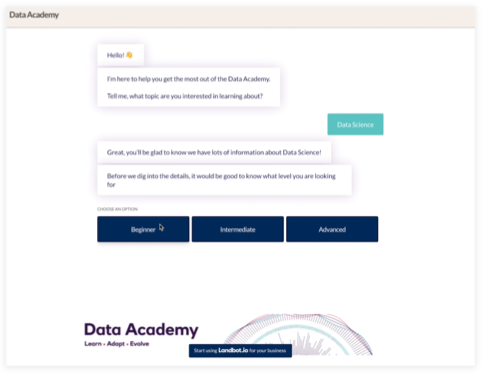
Chat
This prototype used a chatbot style interaction to aid a participants search for learning materials. Participants were prompted to type responses and select a choice from the options presented
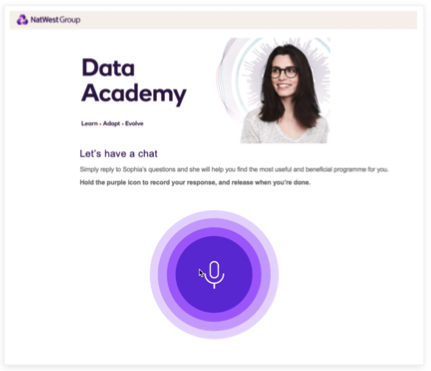
This prototype used audio from AWS Polly to speak to participants. To respond to the questions participants needed to press and hold the pulsing purple button to record their answer
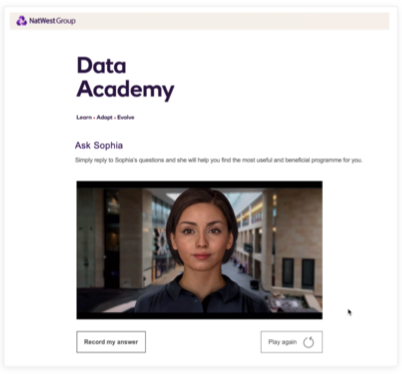
Digital Human
The Digital Human prototype used the Soul Machines technology to emulate a video interaction with participants. To respond to the bot’s questions participants were asked to record an answer by pressing and holding the ‘Record my answer’ button
Research – First round
We then ran 10 one-hour remote sessions with NatWest employees who had experience in using the Data Academy.
We asked participants how they tended to search for learning materials currently, both on the Data Academy website and elsewhere. We also explored any current challenges with the exploring the site they were experiencing.
We then asked participants to work through the 3 prototypes in turn; chat, voice and digital human, and give their feedback on these. The order in which the prototypes were presented was rotated in order to avoid bias. And all prototypes began and ended with the same landing pages.
We gave all participants the same scenario to put themselves into:
You’ve had a discussion with your line manager about career development and they have suggested you need to learn about Data Science. You don’t know much about this subject but decide to go to the Data Academy to have a look at what NatWest have to offer in this area.
Finally we explored ideas for the future of the Data Academy and how artificial intelligence and machine learning could be used in the learning and development space in general.
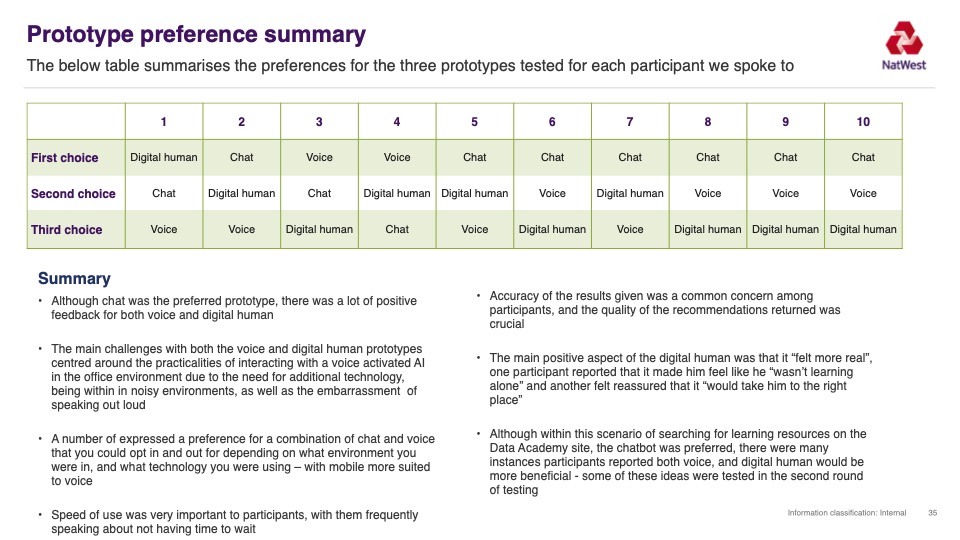
Research – Second round
For the second round of research we brought some of the ideas discussed at the end of the first round to life and discussed how participants expected these features to function
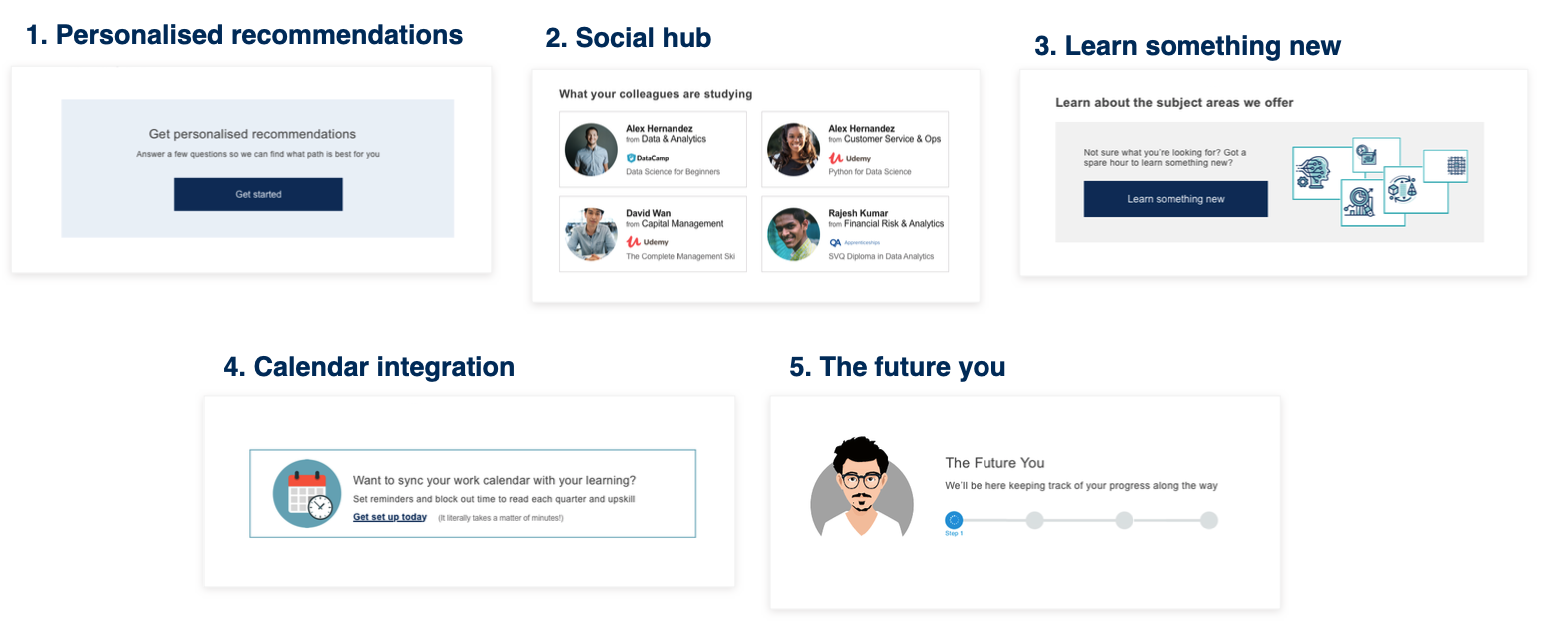
The outcome
After both rounds of testing we put together a report and presented back to the stakeholders, the benefits and challenges of each prototype, and which we would propose to be the best solution. And to conclude we presented the feedback on the ideas that had been discussed with participants, and other ways we believe the Data Academy could be improved.
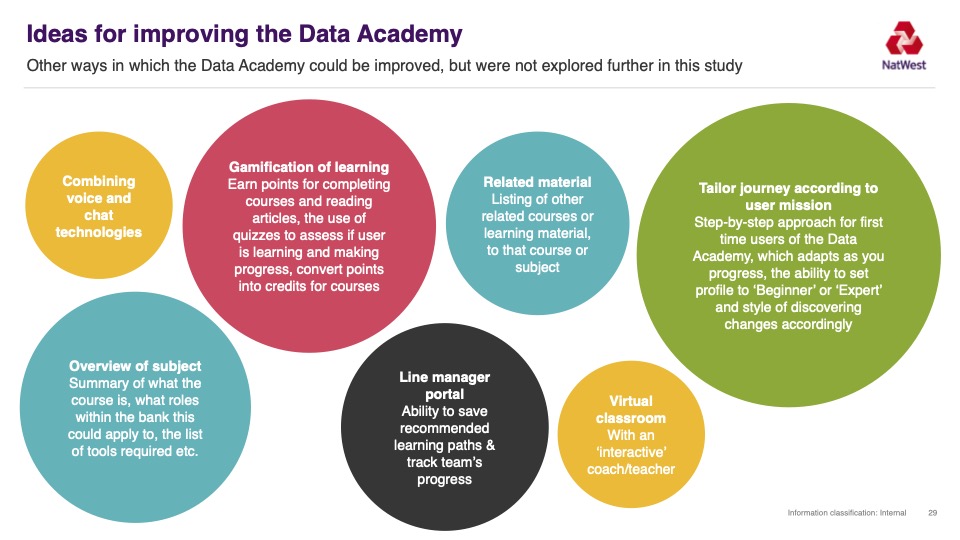
voice banking via your mobile phone
The objectives
- Understand the benefits and challenges around the different routes for progressing the following voice activated technologies: Siri, Google Assistant and bespoke in-app (Cora)
- Gain further understanding of the benefits of voice banking for those with accessibility needs
- Gain further understanding of the behaviours associated with voice, and when and how people might access banking via voice activated technologies
- Gain further understanding of the use cases associated with voice banking on mobile devices
Research
We started this project by jumping straight into the research as there were so many unknowns when it came to voice and especially voice banking. This is initial research step was done in the form of diary studies, run over a period of 6 days with a mix of participants who had access needs and those who didn’t. We then concluded the diary study with an interview, via Zoom, on the seventh day.
The Diary Study
The participants used the mobile platform DScout to complete a series of tasks each day:
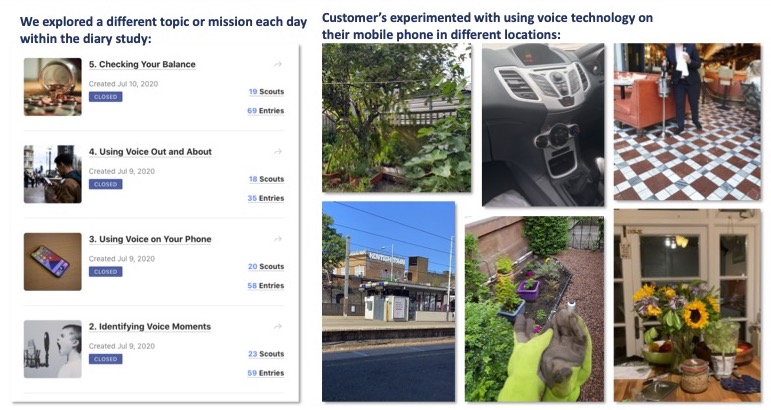
The prototypes
There were 2 prototypes that the participants were asked to test. The first was to check your balance by voice, both out of app and in-app. The second was to make a payment, by voice, both out of app and in-app.
Journey 1: Checking a balance
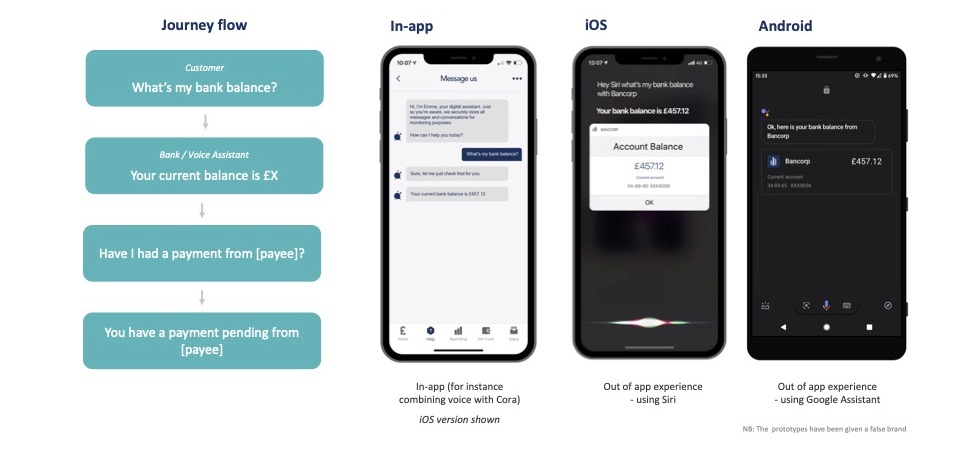
Journey 2: Making a payment

The summary of feedback
Below is a summary of the challenges and benefits associated with the two options for the in v’s out of app experiences:
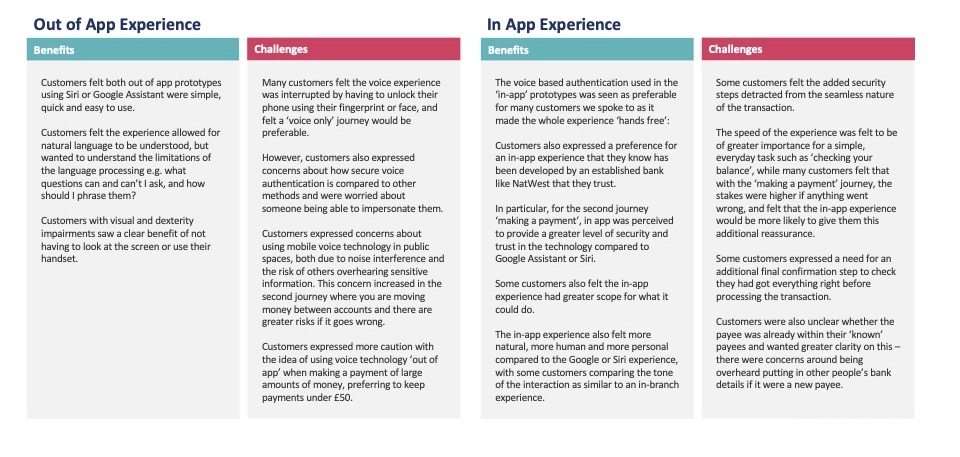
The outcome
Along with a research report, the findings were presented back to stakeholders. We concluded that there were some important criteria to consider when thinking about which technology to progress with from a customer perspective
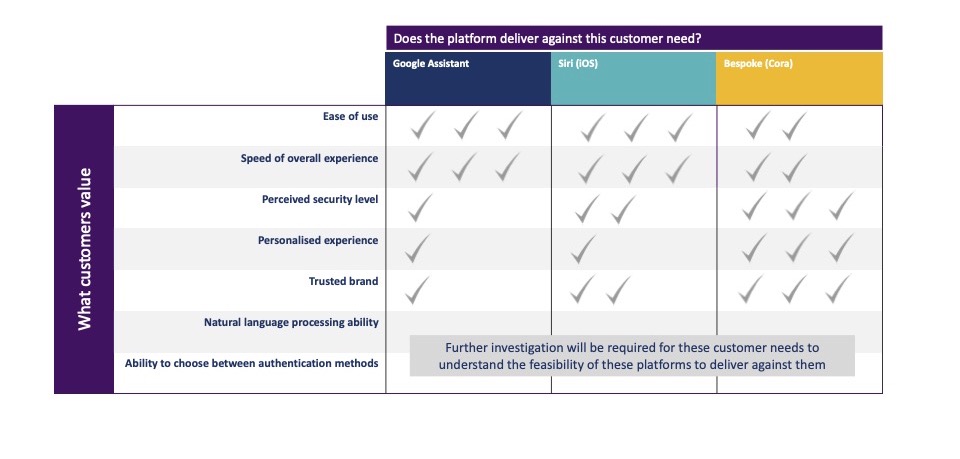
Role
Product Designer
User Researcher
Medium
Prototypes of internal platform
and mobile app
Visit
Both were proof of concepts
Designed & built by me